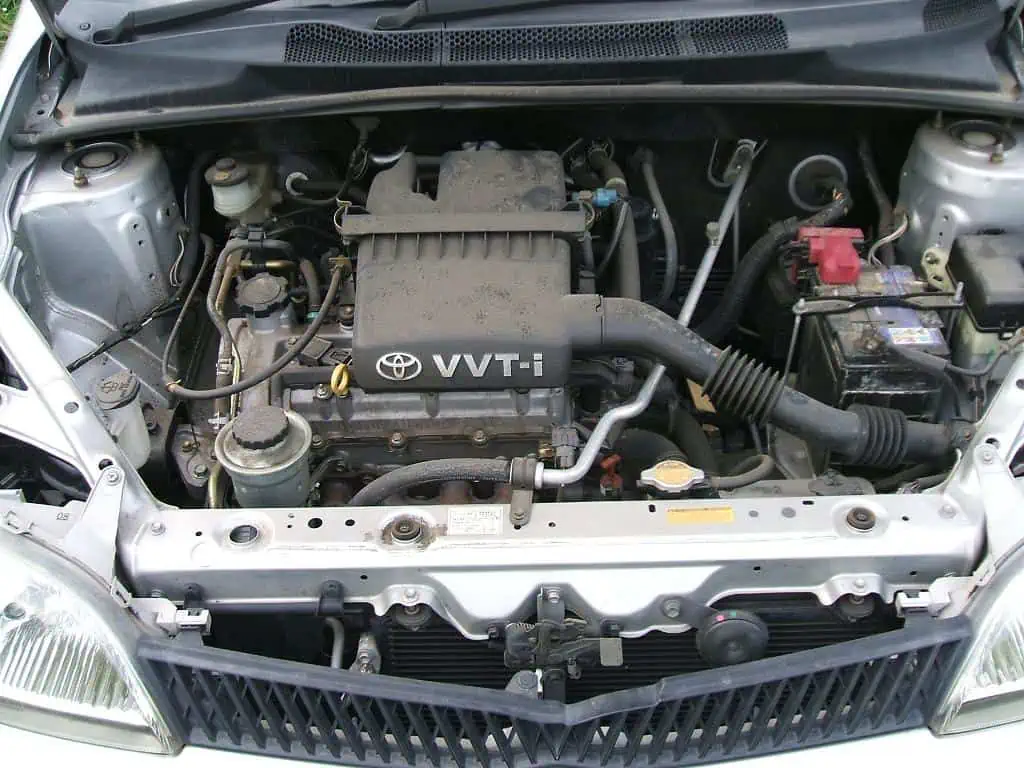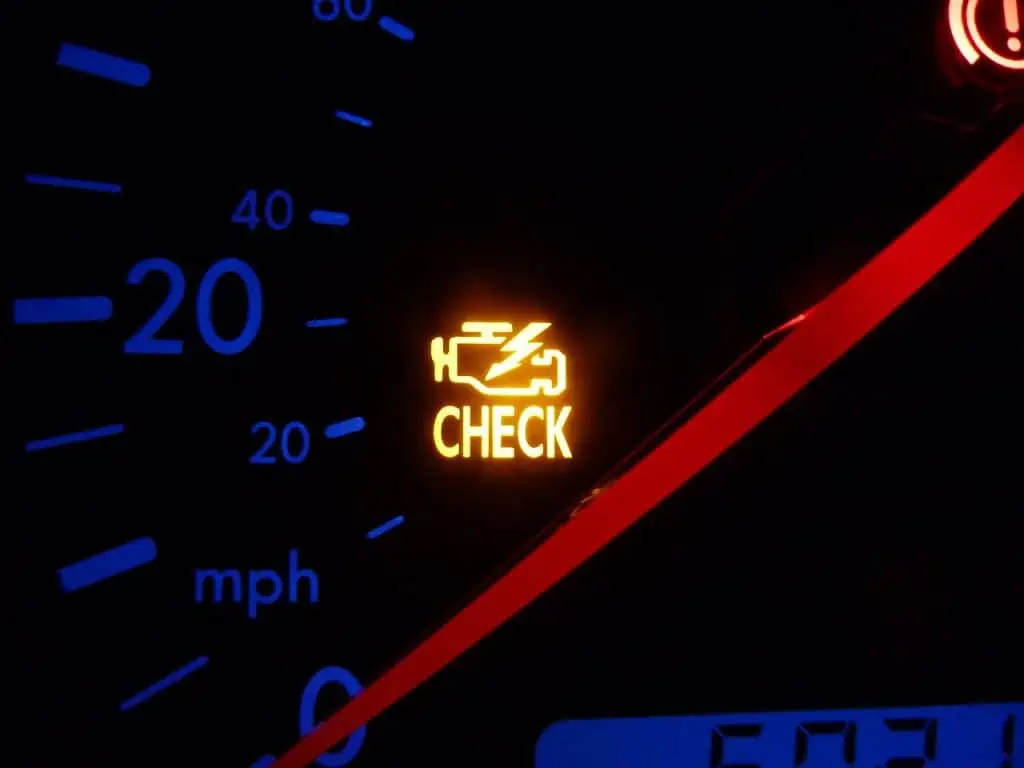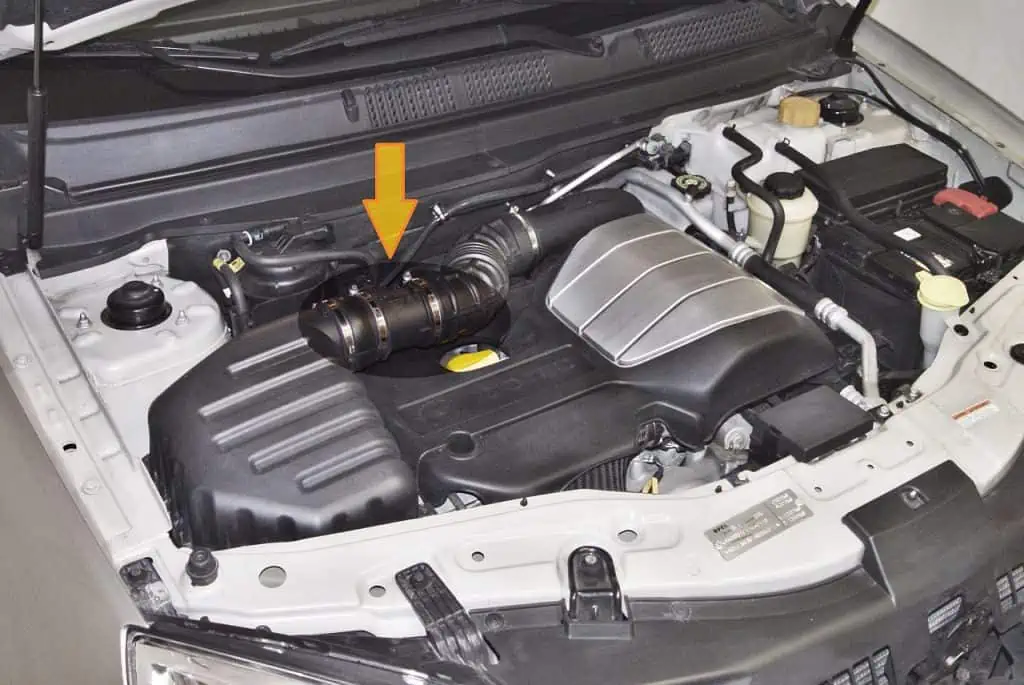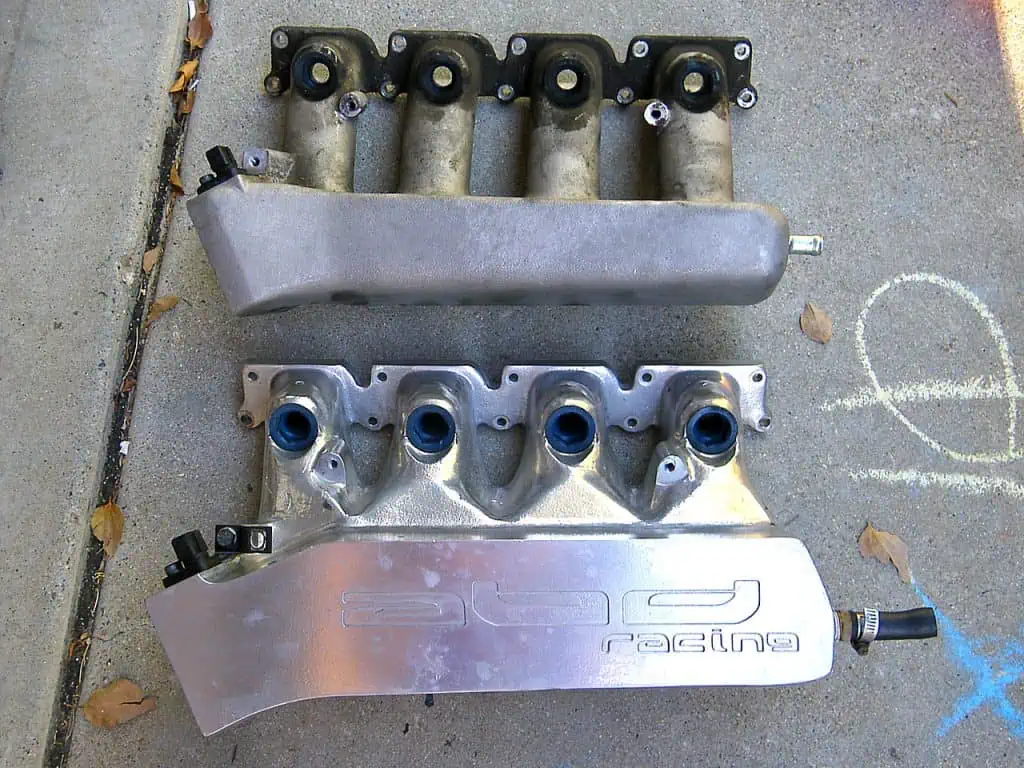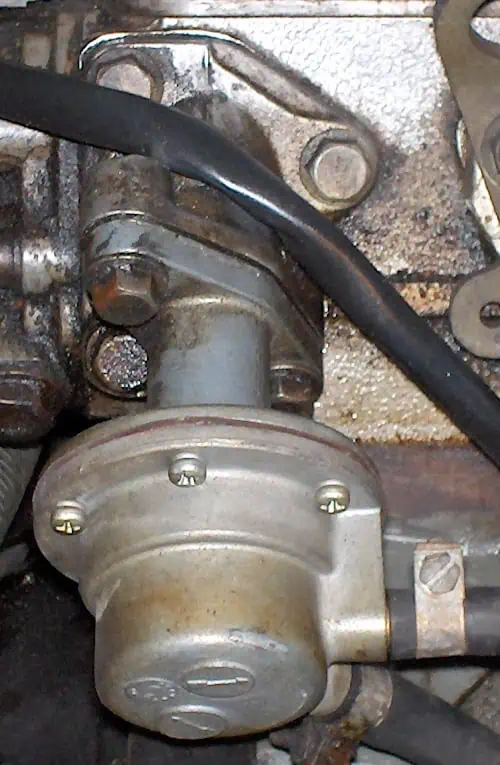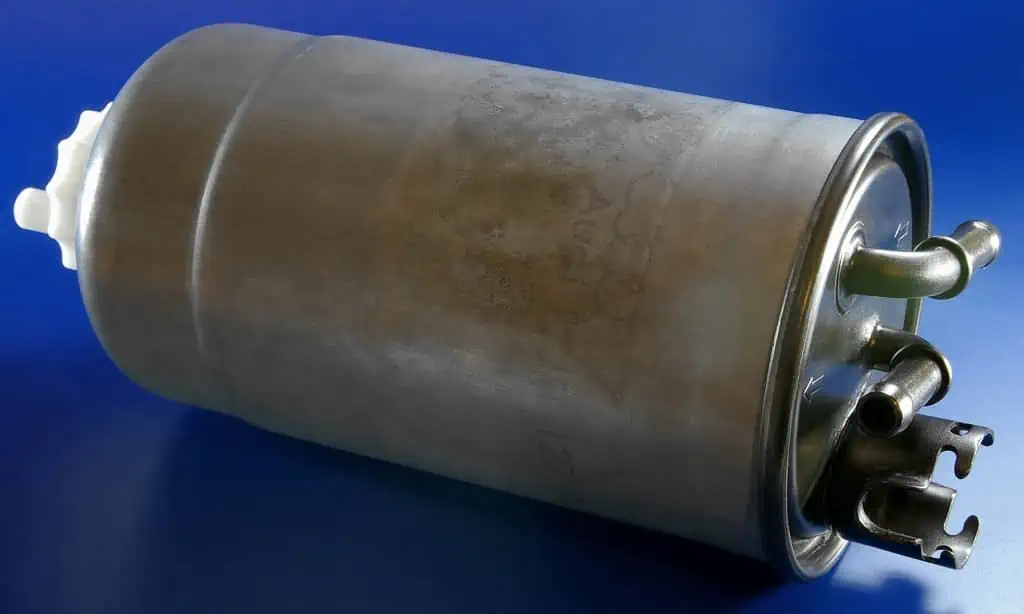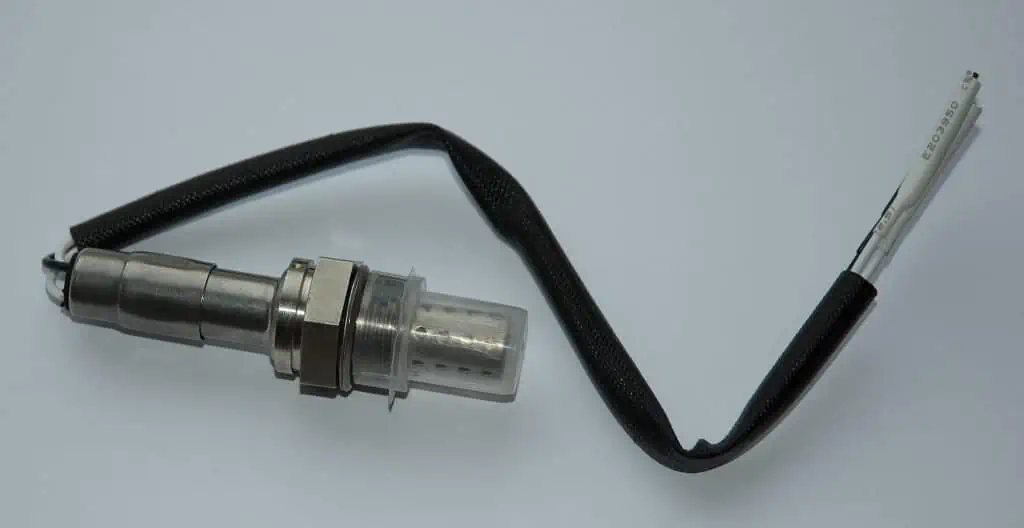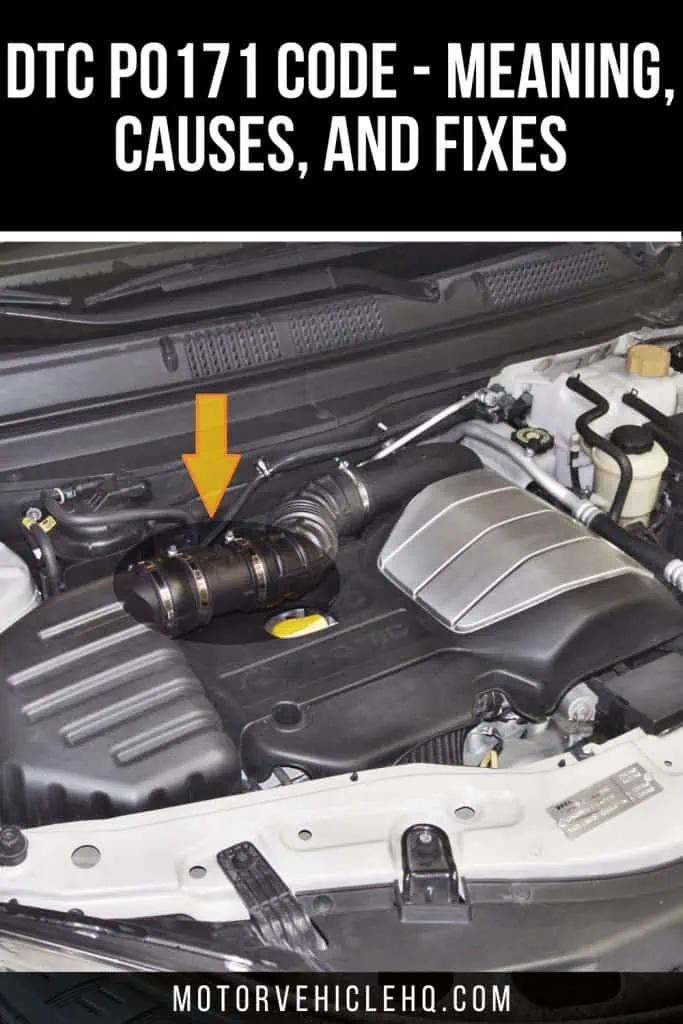Use an OBDII scanner to make sure the P0171 error code is present before attempting to resolve it. Then, try either cleaning the MAF sensor or changing the oxygen sensor, which are the two popular DIY solutions for the P0171 error number.
If none of the solutions work for you, you must take your car to a mechanic who will do manufacturer tests to fix the problem.
One of the most crucial things that any motorist must watch out for is the check engine light. The check engine light could be caused by anything as simple as a loose fuel cap or it could signify a serious issue leading to complete engine failure.
When your check engine light comes on, it’s a good idea to take the issue seriously and get it fixed as soon as you can to avoid any big problems in the future.
Any vehicle may have the very common P0171 error, which is almost certainly caused by an issue with the air-to-fuel ratio. This means that there is an undesirable excess of air in the fuel mixture, or what is commonly known as the system operating lean.
You can find everything you need to know about the P0171 code in this article is only one note. We highlight its description, causes, signs, available fixes, and anticipated repair costs.
What Is the Definition of the P0171 Code?
The primary definition of the P0171 code is “System Too Lean (Bank 1).” You must review the fundamentals of lean fuel versus rich fuel to better comprehend this term. To assist you in deciding if the P0171 error code is serious or not, we will go over this fundamental in the part that follows.
The P0171 Code: What Is Its Significance?
A specific amount of the air-to-fuel mixture should be present in any vehicle using a combustion system. Your car would not function properly and its overall performance would suffer if the air-to-fuel ratio in this mixture was off.
For instance, if your vehicle has too much fuel, the check engine light will illuminate and your vehicle will produce an error.
A typical car engine by Carolla / CC BY-SA 3.0. The P0171 error code is brought on by the first bank of your engine’s lean fuel-to-air mixture. Because cylinder number 1 is located in bank number 1, that is where the error notification is referring to.
Similar to when there is too much oil or, to put it another way, when there is not enough fuel, your car will be running lean, which is typically indicated by the check engine light turning on and being accompanied by either a P0171 code for Bank 1 or another code for Bank 2 of your engine.
What Problem Does the P0171 Code Represent?
The lean fuel-to-air mixture on your engine’s first bank is the cause of the P0171 error code. The error notice refers to bank number 1 because that is where cylinder number 1 is located.
However, you need a check engine light and to run a code scan on your vehicle to see this message. Scanning is essential since there are many possible meanings for the check engine light.
There are two methods for scanning the automobile. One way is to go to a workshop and pay for the service of having the problem diagnosed there. Alternatively, you might try performing a self-diagnosis using an OBD2 scanning tool.
This scanner equipment cost $30 and is widely available online and at the majority of auto parts retailers. But if you want to thoroughly analyze problems, have better input, and avoid having to look up mistakes online, I would advise getting a better scanner.
If you have this problem, you will receive the error code P0171 after scanning the vehicle. You can learn what this mistake implies by searching online for it: “system too lean bank 1.” What does this signify, though?
This indicates that there is excessive air being drawn into bank 1 cylinder and that the fuel-to-air mixture is incorrect. These issues require immediate attention.
For every part of fuel, there must be 14.7 parts of air. The PCM is activated and more fuel is injected into the cylinder if the air ratio is higher than 14.7%. The additional fuel causes the car to exhibit symptoms and illuminates the check engine light.
A P0171 Code: What Else Do You Need to Know?
When the PCM can no longer correct the low fuel condition by injecting fuel, the P0171 code is set, and a check engine light will also illuminate. It’s crucial to remember that this code usually always pairs with at least the P0170 code, which merely indicates that a fuel trim anomaly has been found.
If you encounter the P0172 code, which denotes the opposite of the P0171 code, the P0170 code will also be activated. The PCM detects a negative fuel trim and requests that less gasoline be injected through the fuel injectors, which sets off the code. This denotes “too rich” engine operation.
The fact that the P0171 code and associated codes distinguish between problems with the air-to-fuel ratio in Bank 1 and Bank 2 is another crucial point to remember. The #1 cylinder is located on Bank 1 of the engine, whereas the #2 cylinder is located on Bank 2. However, Bank 2 refers to the side of the engine block that houses the #2 cylinder and is normally only present in engines like V6s, V8s, or V10s.
But some in-line 4 engines also divide into Bank 1 and Bank 2, and they identify their cylinders in the same way.
Finally, whether Bank 2 is on the driver’s or passenger’s side depends on the make and model of your car. To determine precisely what kind of fuel trim issue is occurring and where it is in the engine block, codes P0170 through P0175 are used.
What are the P0171 Code’s Main Causes?
There are numerous reasons why the P0171 error code could emerge. We will discuss each of them in this chapter. This will help you understand potential engine problems better.
A check engine light or malfunction indicator lamp (MIL) by Wikiuser100000 / CC BY-SA 3.0. To prevent any major difficulties in the future, it’s a good idea to take your check engine light seriously and have it addressed as soon as you can.
1. Mass Airflow Sensor Clogging or Damage
One of the first things you should look at when you see this error with the P0171 code issue is the mass airflow sensor.
A dirty MAF sensor, which is placed on the intake, is a common cause of this issue. The best course of action in this circumstance is to remove the sensor from its location and give it a thorough cleaning.
You can reinstall the sensor in its original location after cleaning it. I hope this may help you with your issue. Whether not, you must check your MAF sensor to see if it is malfunctioning. The sensor must be changed with a new one if it is defective. What about the expenses? They will be discussed later in this text.
2. Leaks In the Intake Manifold Gasket, PCV Valve Hoses, and Vacuum
Vacuum leaks are yet another possible cause of this issue. The PCV valve and EVAP system hoses are the sources of these vacuum leaks.
When the EVAP solenoid and PCV valve malfunction, too much air might enter the engine. This leads to issues like this one with the P0171 code issue. The PCV valve and the EVAP solenoid should be checked to verify if they are in good operating order in this situation.
You will need to buy new components if any of these are damaged or in poor condition. They are affordable and easily accessible at nearly every parts store.
If there are any leaks in the hoses, you should also examine the intake manifold gasket and the hoses themselves. It will be a good idea to replace the intake manifold gasket with a new one if it is too old. They are reasonably priced and easily accessible, just like vacuum hoses.
3. Faulty Fuel Pump
The P0171 code issue may also be brought on by a defective gasoline pump. This is true because the fuel pump is not supplying the cylinders with enough fuel. In this instance, there is not enough fuel inside the engine and there is too much air. That is why a lean air-to-fuel mixture can develop and severely hinder the performance of your engine.
Your fuel pump is fairly simple to test. You should hear a click from the back when you insert your key into the ignition. If there isn’t a click, your fuel pump isn’t turning on. The only option for you in this circumstance to fix the P0171 code error issue is to replace the fuel pump.
4. Fuel Filter Clogging
Lack of fuel in the engine might also be brought on by a clogged fuel filter. You essentially won’t have much fuel in the fuel line that connects the fuel filter to the engine if the fuel filter is clogged.
And this will lead to a lean air-to-fuel mixture and potential issues like the appearance of the check engine light and the P0171 code trouble.
5. Defective Fuel Injectors
One of the causes of this particular issue with the lean air-to-fuel mixture can potentially be bad or blocked fuel injectors.
This is true because clogged fuel injectors do not inject the appropriate amount of fuel. Low fuel will subsequently be delivered to the combustion chamber as a result. This indicates that the air-to-fuel ratio will be out of balance, which could result in the check engine light appearing on the dashboard.
6. Damaged O2 Sensor
When an engine has a lean air-to-fuel mixture, O2 sensors can also be one of the main culprits. The O2 sensors are in the exhaust, which explains why this is the case. The exhaust gases that are released are measured by these sensors.
MAF sensor in a 2006-2015 automotive diesel engine by Antonín Ryska / CC BY-SA 4.0. The mass airflow sensor is one of the first things you should check if you experience this error with the P0171 code issue. This problem frequently has a dirty MAF sensor, which is located on the intake.
The PCM will then determine how much fuel and air to inject into the cylinders based on this data. Poor readings from these O2 sensors may result in an incorrect air-to-fuel ratio and the P0171 code error.
O2 sensors can be challenging to test because the sensor must be removed. A blow torch and a multimeter are required to complete this task.
Which are the Common Symptoms Associated with the P0171 Code?
As we previously stated, when the air-to-fuel ratio is less than 14.71 to 1, various symptoms will manifest. Due to the PCM instructing the injectors to deliver more fuel into the combustion chamber, this is the case.
Your engine is going to have all kinds of problems as a result of the excess fuel, and you won’t love how the engine runs. So what signs or symptoms point to a P0171 code issue? Let’s investigate.
1. The Check Engine Light Illuminates
The check engine light is one of the early signs of this issue. When you see the check engine light on your dashboard, you probably won’t love it because it may be quite bothersome.
However, the check engine light is there to let you know if there is a problem with your engine, thus it serves a purpose. The check engine light makes it simple to diagnose issues with your car.
Simply insert your OBD2 scanner into the port to check the vehicle for codes. You can search for the codes and learn more about them after the scan. You may get the answers to your inquiries with just one click, without removing anything at all.
Specifically for this issue, you’ll probably encounter the P0171 error code, which stands for “system too lean bank 1.” This indicates that there is a problem with the air-to-fuel ratio, and you need to troubleshoot some of the parts that we will discuss later in the article.
2. Reduced Engine Power
The low engine power is another sign of the P0171 code issue. This is the case because the cylinder, which receives air from the intake, has too much air in it.
Per engine rotation, all of this extra air could not be adequately ignited. As a result, the exhaust is pushed with the additional air.
This would not be good for your engine. Low combustion equals insufficient engine power. Your car’s performance will suffer from the lack of power, and you’ll experience the check engine light indicated above.
Especially if your car already has a weak engine, this lack of power might be annoying. Your automobile would scarcely move on the road if something were to happen to you.
Because of this, resolving this condition as quickly as feasible will give you long-term relief. We will discover what can be the potential causes of this issue and how to solve it in one of the upcoming chapters.
But first, let’s talk about the following symptom, which is the engine’s rough idle, which is accompanied by poor engine power.
An automotive intake manifold by Alison Cassidy / CC BY-SA 3.0. You should also check the intake manifold gasket and the hoses to see if there are any hose leaks. One of the causes of the P0171 code’s appearance is this.
3. Harsh Idle
Rough idle is a different symptom related to poor engine power. This harsh idle is a blatant sign that your ignition system isn’t working properly. dealing with the problem involving the P0171 code.
When you start the automobile, you’ll notice the rough idle of the engine. You may observe the tachometer’s needle rising and falling. This erratic movement is not encouraging. This movement indicates a problem with the combustion process that has to be investigated.
The best course of action in situations like this is to examine the throttle body by opening it up. You can give it a thorough cleaning if it is covered with filth. If that doesn’t work, there must be a problem with the sensors.
When we address the potential causes of this issue in one of the following chapters, we’ll talk about that.
4. The Engine Tries or Keeps Stalling
The engine will occasionally attempt to stall when you have a choppy idle. When you take your foot off the gas pedal, this will be the most obvious.
When the foot is taken from the gas pedal, the engine’s banks will consume too much air, which could lead to low combustion on bank 1.
The best course of action in this circumstance is to press the throttle more frequently. The air-to-fuel ratio will be balanced as a result, and the engine will continue to run. However, it can occur when you neglect to press the gas, which will cause the engine to stall.
Therefore, the best course of action if you encounter a situation like this is to use a code reader to diagnose the issue, determine what the true problem is, and then track down the genuine offender.
After going over all of the P0171 code problem’s symptoms, we’ll talk about all of the likely causes.
5. A Growth In Fuel Consumption
One of the signs that you have a P0171 code issue is increased fuel usage.
This is the situation because the engine is constantly attempting to stall due to the excessive air in the mixture. So, by depressing the gas pedal, you are balancing this. Applying extra gas entails injecting the cylinder with more gas than is required.
Your fuel economy will suffer as a result of the additional gas. In the worst-case scenario, if you have this problem, you can anticipate a decrease in fuel economy of about 5 mpg. It might be costly to keep your car in its current condition for an extended period.
The car’s increased thirst is a telltale sign that something needs to be looked at and fixed. You will solve the issue and save money on gas as a result.
The only method to accomplish this is to scan the vehicle for codes. This is to determine what first brought about this issue. If you have the P0171 code issue, continue reading because we’ll reveal all of the potential causes of this issue.
6. Misfires In the Engine
When your car has a P0171 code problem, engine misfires can also be one of the possible causes.
Consider a scenario where there is too much air present in the cylinders but it is not ignited. Engine misfires will be the consequence of this. Once all of the unburned air has been removed from the combustion chamber, the valves won’t operate properly and will remain open for an excessive amount of time.
An automotive fuel pump by Sonett72. A faulty gasoline pump may also be the cause of the P0171 code problem. This is accurate since not enough fuel is being delivered to the cylinders by the fuel pump.
These errors are subtle, so not everyone will be able to see them. Additionally, they are brought on by additional offenders, such as faulty coils or spark plugs. These misfires may also be brought on by a rich air-to-fuel combination.
So, the only way to get all the answers you need is to scan the car for codes. And if the response is the P0171 code, you are aware that the bank 1 cylinders are operating with a lean air-to-fuel ratio. But what are the reasons for this lean fuel-to-air ratio?
We’ll talk about that more in the section that follows, and we’ll also look at several quick and efficient solutions to this issue.
How Is the P0171 Code Diagnosed By a Car Repair Technician?
Let’s say that your car only has the P0171 Code: “System Too Lean Bank 1” difficulty code and no other problems. A professional may use a vacuum gauge to inspect your car’s engine for vacuum leaks to correctly diagnose the P0171.
A fuel pressure gauge gadget will be used by your mechanic to check the fuel pressure as well. The engine’s vacuum and fuel pressure must be per the manufacturer’s recommendations to maintain the right fuel/air ratio.
One of these two inspections your mechanic performs is likely to reveal the origin of the P0171 code. However, if the mechanic is unable to identify the reason for the code using one of these two tests, there may be a sensor problem.
If this is the case, the technician will perform tests using the mass airflow sensor and oxygen sensors per the manufacturer’s recommendations. But after carrying out all these checks, your mechanic can conclude that the powertrain control module is the likely cause of the P0171 code.
What Fixes Can I Do to My Vehicle to Eliminate P0171 Code
The P0171 code, which stands for “System Too Lean Bank 1,” can be fixed. Let’s look at a couple of them.
1. Replacement of the Fuel Pump
The replacement of the fuel pump may be the solution to your P0171 error code. The typical cost of replacing a fuel pump can range from $750 to $1,900. The actual price is affected by the vehicle’s age, make, and model.
2. Replacement of the Fuel Filter
If you need to change your gasoline filter to clear the annoying P0171 code, you are looking at a reasonably priced repair. In contrast to most auto repairs, you should budget between $50 and $175 for your mechanic to replace a decent fuel filter.
3. Replacement of the Fuel Pressure Regulator
Although it is not a particularly well-known auto part, a fuel pressure regulator is unquestionably essential to the running of your car. To keep the fuel and air mixing system operating at the right level, the fuel pressure regulator is crucial.
Fuel filter for diesel Volkswagen car engines by Johann H. Addicks / CC BY-SA 3.0. A clogged fuel filter may potentially be the cause of the engine’s lack of gasoline. Additionally, this will result in a lean air-to-fuel mixture and possible problems including the emergence of the check engine light and the P0171 trouble code.
Fuel pumps that push an excessive amount of fuel into the fuel injectors are a sign of a poorly functioning fuel pressure regulator. They will stop working because of those gasoline injectors. Replacement fuel pressure regulators typically cost between $250 and $400.
4. Replacement of the Powertrain Control Module
Perhaps replacing the powertrain control module can solve the P0171 Code: “System Too Lean Bank 1” difficulty code issue. The abbreviation PCM is typically used to refer to the powertrain control module.
Your PCM is the part that combines the transmission control unit and is responsible for controlling the ignition system in your engine. Additionally, your PCM controls and keeps an eye on the fuel injection and emission systems.
Did you know that the PCM also needs to assess additional processes connected to the car’s engine and gearbox systems? The PCM replacement typically costs between $500 and $1,500.
5. Replacement of the Fuel Injector(s)
Perhaps you need to replace your fuel injector or injectors as a result of the P0171 Code: “System Too Lean Bank 1” fault code.
Typically, a complete replacement of a fuel injector will cost between $800 and $1,450. However, if you can do the repairs yourself, parts would run you between $600 and $1200.
6. Replacement of the Oxygen Sensor(s)
Replace your oxygen sensor, perhaps, to make your P0171 Code: “System Too Lean Bank 1” issue code disappear. In terms of vehicle structure, oxygen sensors are relatively recent.
In 1996, the oxygen sensor entered the car industry. You should budget between $250 and $500 for a replacement if your oxygen sensor is failing.
7. Replacement of the Mass Air Flow Sensor
If you replace your mass air flow sensor, the unpleasant P0171 Code: “System Too Lean Bank 1” error code can disappear. Sensors that measure mass airflow are frequently used in fuel-injected engines.
The mass airflow sensor in a car is responsible for controlling how much air gets into the fuel injection engine.
The mass air flow sensor also provides the engine control unit, or ECU, with data. Its information is essential because it enables the ECU to provide the engine of the car with the right amount of fuel.
8. Repair of a Vacuum Leak
You might need to get a vacuum leak rectified right away to clear up the P0171 Code: “System Too Lean Bank 1” error code. Maybe you’ve heard the term “vacuum leak,” but you’re not sure what it means. What precisely is a vacuum leak, then?
The system between the mass airflow system and the engine is the subject of this problem. The location of the leak must be determined by your mechanic. Therefore, the price to fix a vacuum leak might range from $150 to $1,000 depending on where the leak is.
Is the P0171 Code a Serious Problem?
The seriousness of the P0171 code and its associated codes can vary. The code doesn’t pose any immediate risks by itself, but you should have it examined right away by a trained technician. The PCM may sustain more damage that would be more expensive to fix if the code were to stay there for a longer time.
A three-wire oxygen sensor by Mnemo / CC BY-SA 3.0. Perhaps changing your oxygen sensor can eliminate the P0171 Code: “System Too Lean Bank 1” error code. The use of oxygen sensors in automobiles is very new.
As we’ve shown, even if no symptoms are evident right away, it’s still possible that the car is running too richly and compromising its fuel efficiency.
If the incorrect air-to-fuel ratio is continuously pumped into the system, a problem with your fuel pump or injectors could result in long-term harm.
The ratios that are predetermined at the factory for engine functioning are there for a reason—they have been tested and are what is required to keep the vehicle running more smoothly for a longer period.
However, most modern cars will take corrective action by switching to the limp mode or restricted power mode to prevent the engine from suffering significant damage. As we’ve previously mentioned, operating a vehicle under lean conditions might result in spark knocking or pinging, which can have more dangerous repercussions.
Pinging occurs when oxygen (O2) is changed into nitric oxide (NOx), a pollutant of the atmosphere. And as a result of this action, both the valve surfaces and your combustion chamber may sustain damage.
As a result, the catalytic converter overheats to the point where it flashes brightly red and threatens to set other components of the automobile on fire.
P0171 Code: Can I Still Drive My Car?
How serious of a code is P0171? is one of the most often asked inquiries we get.
You won’t be specifically prohibited from using your car under this code. It is never advised to drive your automobile for an extended period with this mistake, as it could cause engine overheating and lead to engine damage.
Did you realize that one of the most dangerous issues you might encounter is engine overheating? Yes, if engine overheating is not immediately addressed, it might swiftly lead to engine self-destruction.
Which are the Common Diagnosis Errors for P0171 Code?
Since the P0171 error code is one of the most frequent ones that drivers encounter, many people quickly commit the error. This error involves changing the oxygen sensor right away when there are problems with the reading.
As professionals, we advise using an OBDII scanner to conduct a thorough inspection and testing of numerous potential problem-causing components. For instance, checking the mass airflow sensor is the simplest thing to perform, and occasionally you might also need to check for vacuum leaks.
Never try to replace the oxygen sensor and believe that is the only way to get rid of the P0171 error.
The Conclusion
Any combustion system requires a specific ratio and combination of air to fuel. Your vehicle’s overall performance will be subpar if this percentage is impacted.
The P0171 error code, which refers to having more air than fuel in the air-fuel mixture, is one of the extremely frequent error codes you could encounter. A system running lean is the term used to describe this circumstance.
When this occurs, you must address the issue right once to fix it and avoid serious problems later on.
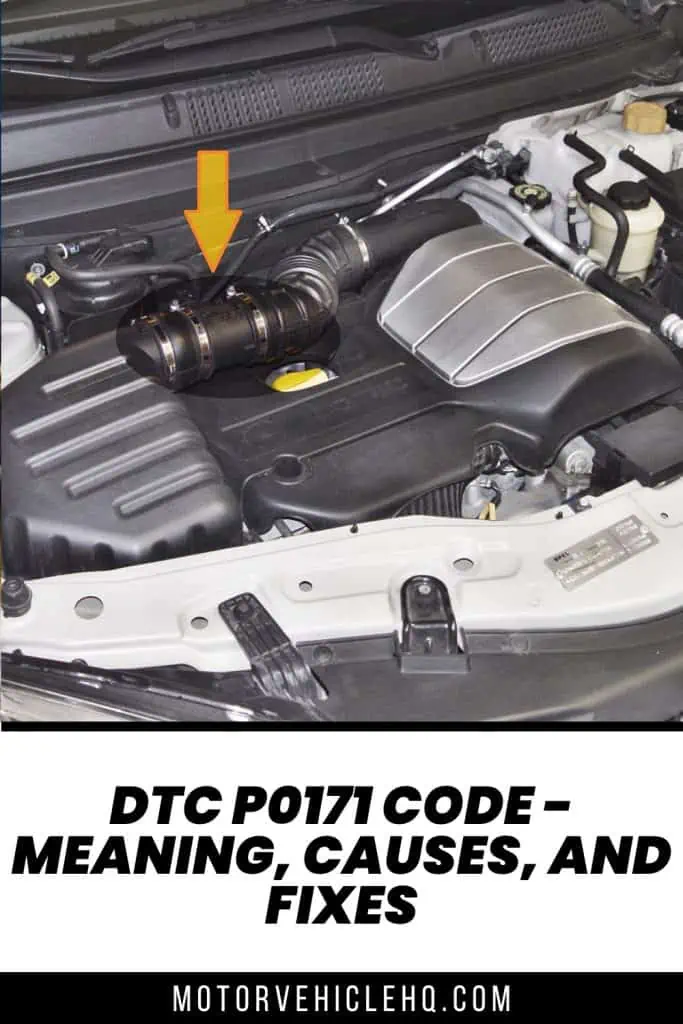
MAF sensor in a 2006-2015 automotive diesel engine by Antonín Ryska / CC BY-SA 4.0

Jim Wicks is the founder of MotorVehicleHQ. With over two decades of experience in the automotive industry and a degree in Automotive Technology, Jim is a certified car expert who has worked in various roles ranging from a mechanic, car dealership manager, to a racing car driver. He has owned more than 20 cars over the past 15 years. Ask him about any vehicle you see on the road and he can tell you the make, model and year. He loves the aesthetics of all things cars, and keeps his vehicles in pristine condition.
In his free time, Jim enjoys getting his hands dirty under the hood of a classic car or taking long drives along the country roads. His favorite car? A 1967 Shelby GT500, a true classic that, according to Jim, “represents the pure essence of American muscle.”
